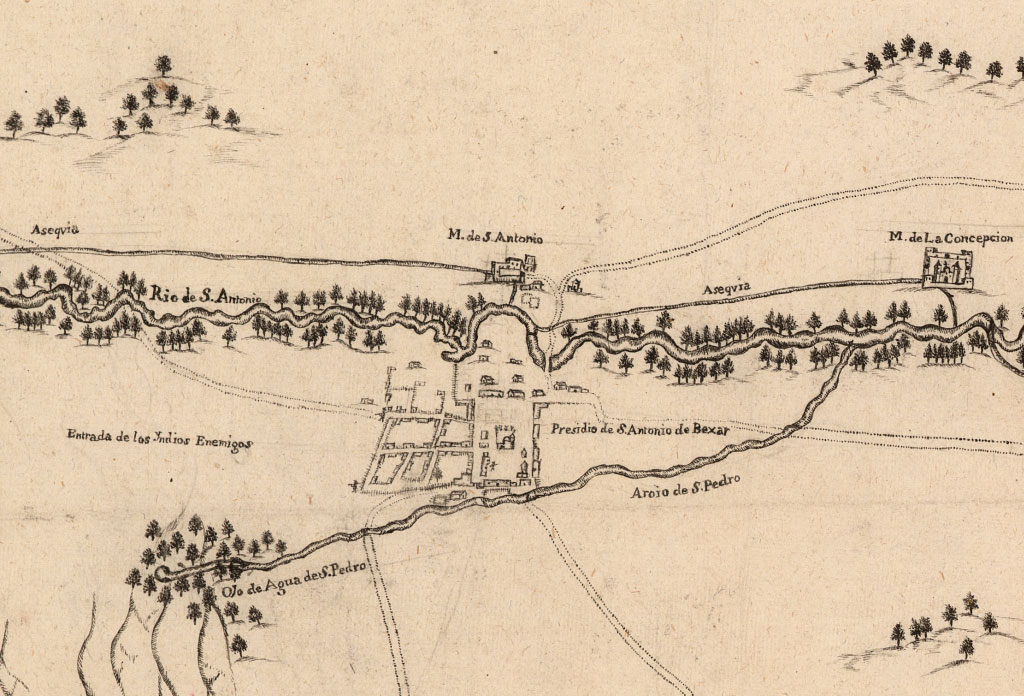Under a charter from the King of Spain, more land north of the town’s site became available to accommodate growth and generate income. Then, after peace was reached with the Apaches in 1745, the town council was able to make grants of land west of San Pedro Creek. Landmarks named in the grants included both the creek and “a road called many names.” Today, we know it as Laredo Street.
More and more settlers had come to the area around San Pedro Creek. By 1779, the population was more than 1,200 strong. Neighborhoods formed, unofficially at first; there were six of these barrios, each represented by its own commissioner. They were called the Barrio del Sur, Barrio del Norte, Barrio del Alamo, La Villita, El Portrero, and the Barrio de Laredo. And they shaped the city in countless ways (although they did not receive official recognition until 1809). While you won’t see their names on modern city maps (with the exception of La Villita) they continue to impact both the present and the future. Of special note is the Barrio del Norte, which was positioned between San Pedro Creek and the San Antonio River. It thrived especially well because of its access to abundant water and proximity to the plazas that were the center of community life.
As the barrios prospered and the population grew, it became clear that there was a need for more cemeteries. The parish cemetery was established where the Children’s Hospital of San Antonio (formerly Santa Rosa) is now. And the city cemetery was located where Milam Park is today.



